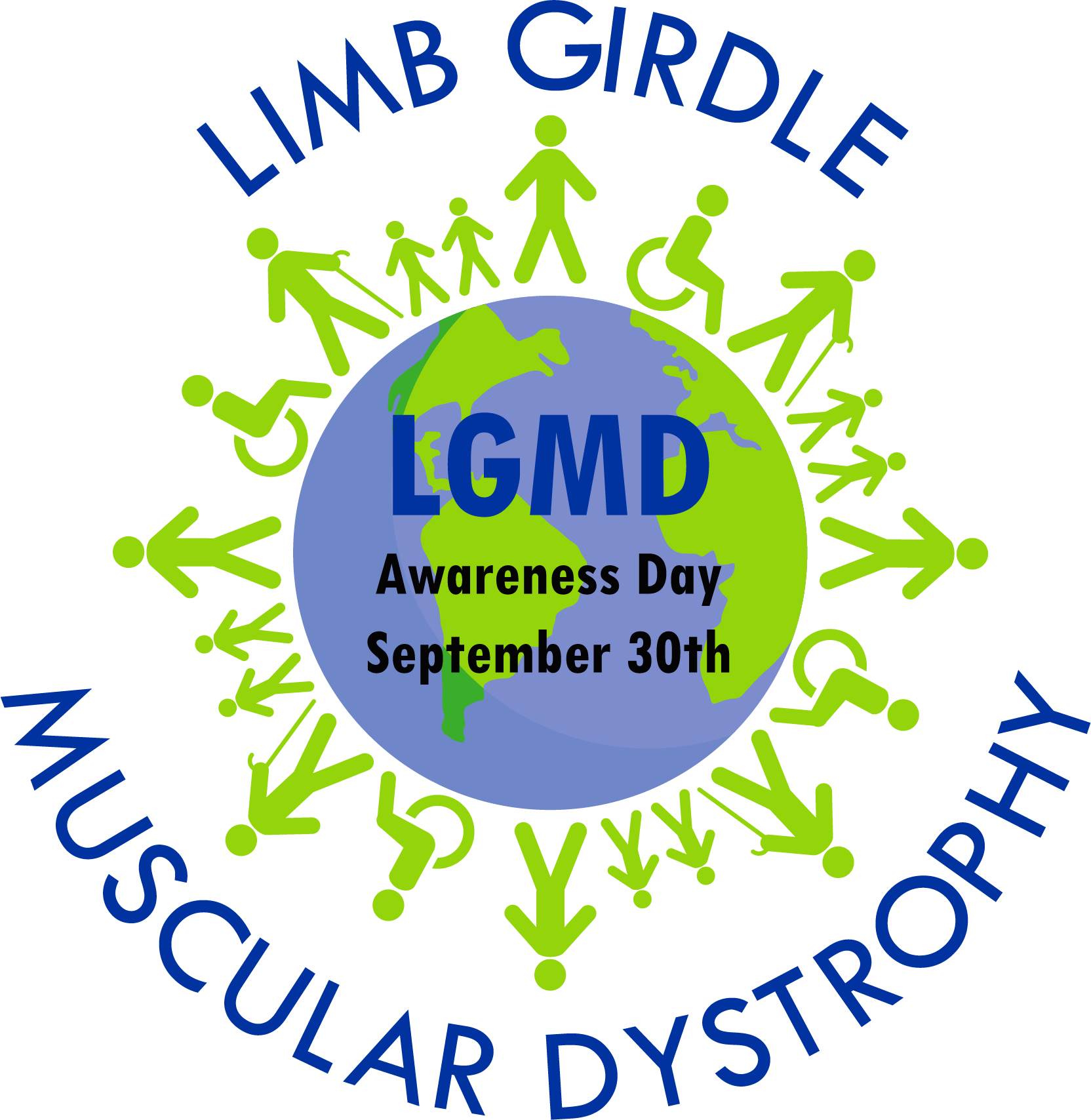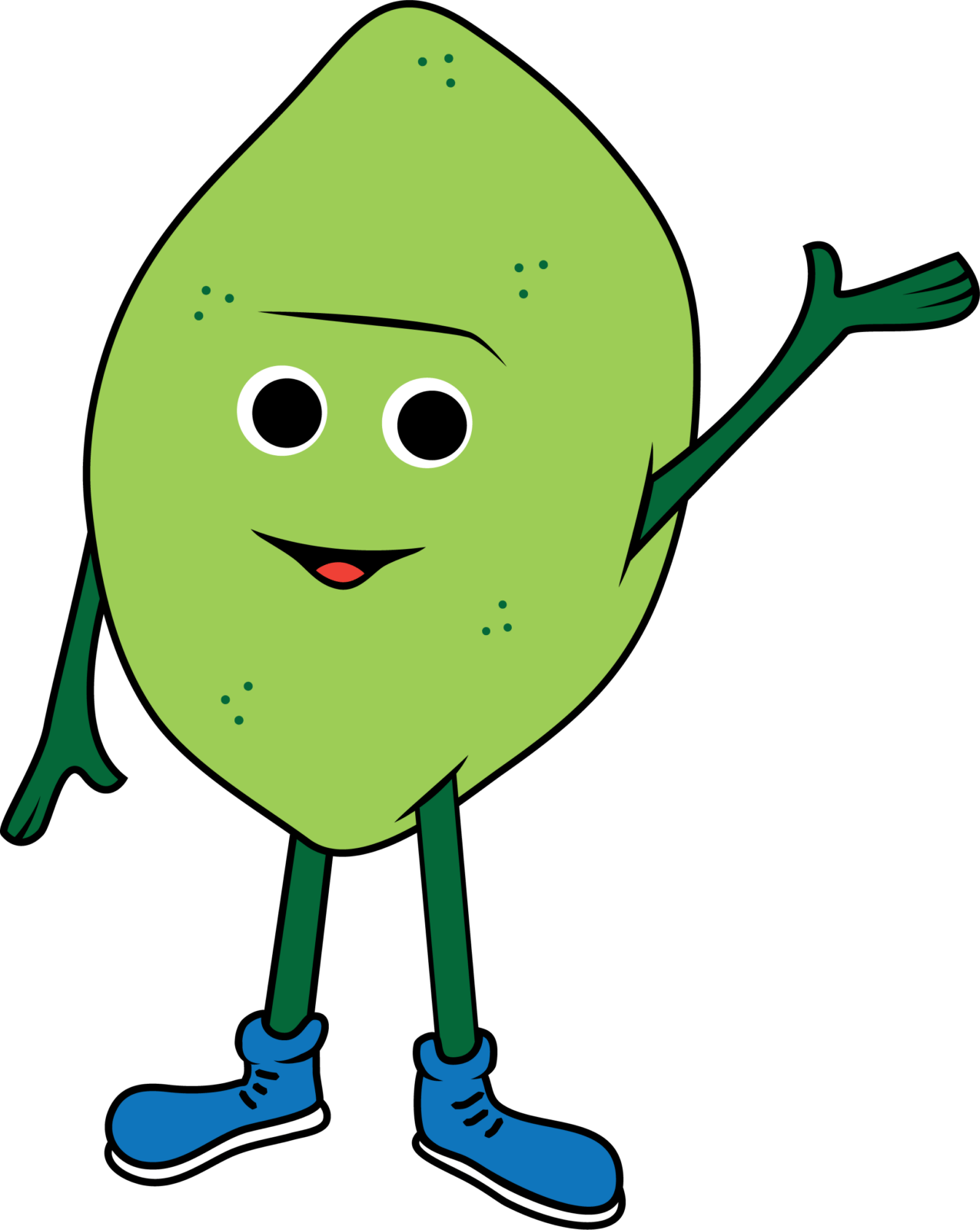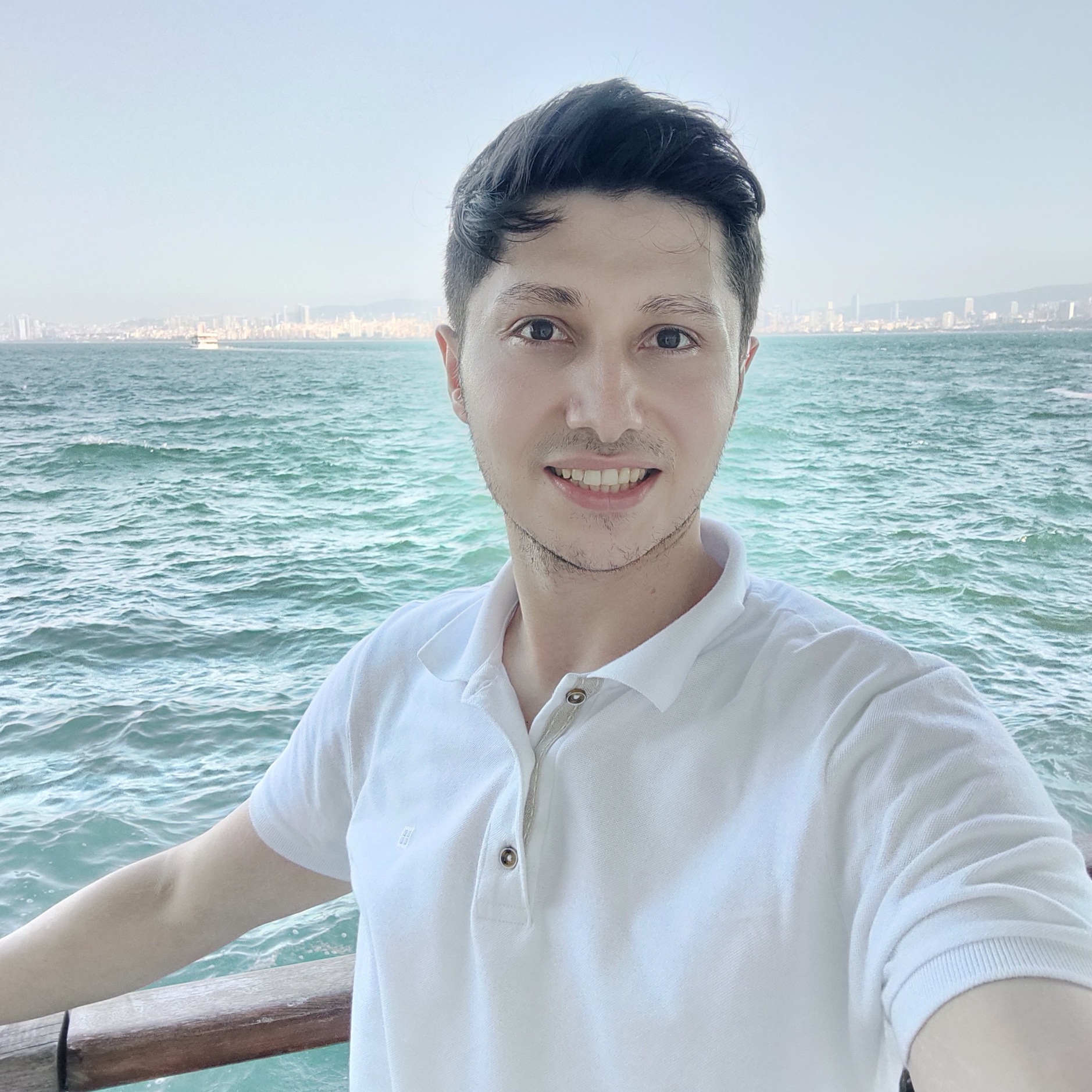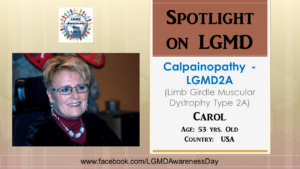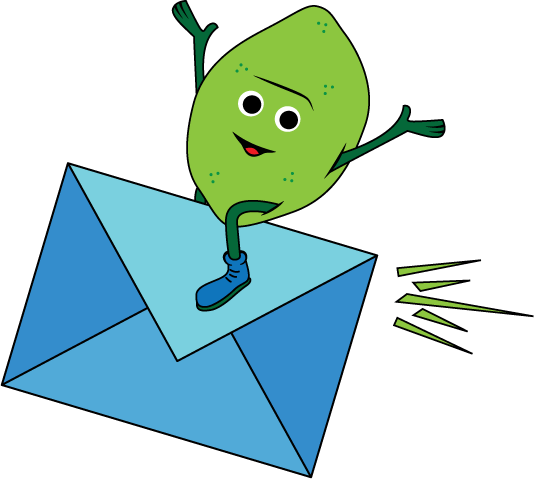INDIVIDUAL WITH LGMD: Carol
NAME: Carol
AGE: 53
COUNTRY: United States
LGMD Sub-Type: LGMD 2A / Calpainopathy
AT WHAT AGE WERE YOUR DIAGNOSED:
I was diagnosed with LGMD when I was 9 yrs. old but did not receive genetic confirmation of LGMD2A until I was 51 yrs. old
WHAT WERE YOUR FIRST SYMPTOMS:
As a child, I had a tendency to walk on my toes. By the time I was 9 yrs. old, I could no longer get my heels onto the ground when standing due to contractures. I began to develop somewhat of a “waddling” gait and was also experiencing difficulty in running and climbing stairs.
DO YOU HAVE OTHER FAMILY MEMBERS WHO HAVE LGMD:
No, I am the only one that we are aware of.
WHAT DO YOU FIND TO BE THE GREATEST CHALLENGES IN LIVING WITH LGMD:
Continually dealing with the on-going progression of this disease is always a challenge. One of the greatest challenges though is to be dependent on others for most activities of daily living. I need someone to help me get dressed, to go to the washroom, to bathe, etc. It is very difficult to lose your independence!
WHAT IS YOUR GREATEST ACCOMPLISHMENT:
I was named the 2000-2001 Rehab Institute of Chicago (RIC) “Female Disabled Water Skier of the Year”. But in all honesty, my greatest accomplishment is living a productive and active lifestyle despite the challenges that I encounter on a daily basis due to my LGMD diagnosis. I worked for 20+ years as a registered occupational therapist (OTR), I am happily married and I am very involved in my church & community.
HOW HAS LGMD INFLUENCED YOU INTO BECOMING THE PERSON YOU ARE TODAY:
LGMD has made me stronger as a person despite causing me to be physically weaker. Living with LGMD has help me to realize & accept the fact that everyone has challenges in their life. Unfortunately, my LGMD is more apparent or visible…but it has also helped me to realize that we all have special gifts or qualities that more than make up for the challenges. I’ve learned the importance of focusing on & appreciating the things that I CAN do versus dwelling on the things in which I cannot. It has also enabled me to find the blessings in my life and to appreciate even the smallest of gifts. Through this all, I have become an advocate and role model to many who struggle with a disability or challenge in their life…and it is in part due to my LGMD.
WHAT DO YOU WANT THE WORLD TO KNOW ABOUT LGMD:
Currently there is NO treatment or cure for LGMD. The unrelenting nature of this rare disease just keeps on making us weaker and weaker….even when you think it is impossible to get any weaker! Historically, LGMD attracts significantly fewer research dollars than other forms of muscular dystrophy & thus fewer researchers working to understand the disease & discover a cure. This has to change! We need more funding and more research to help discover a cure and treatment for all forms of LGMD.
IF YOUR LGMD COULD BE “CURED” TOMORROW, WHAT WOULD BE THE FIRST THING THAT YOU WOULD WANT TO DO: I would want to run up to my husband and wrap my arms tightly around him to give him a huge hug! Then, go running on a sandy beach.

